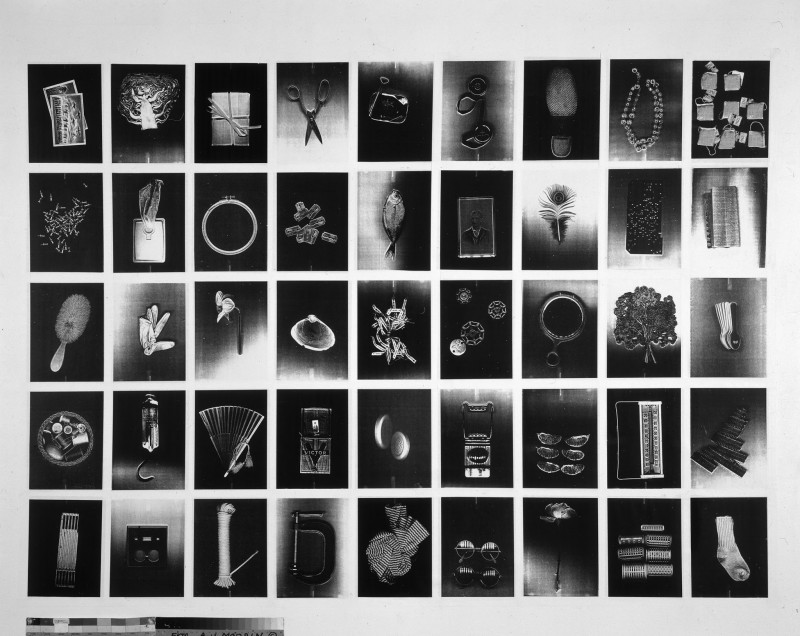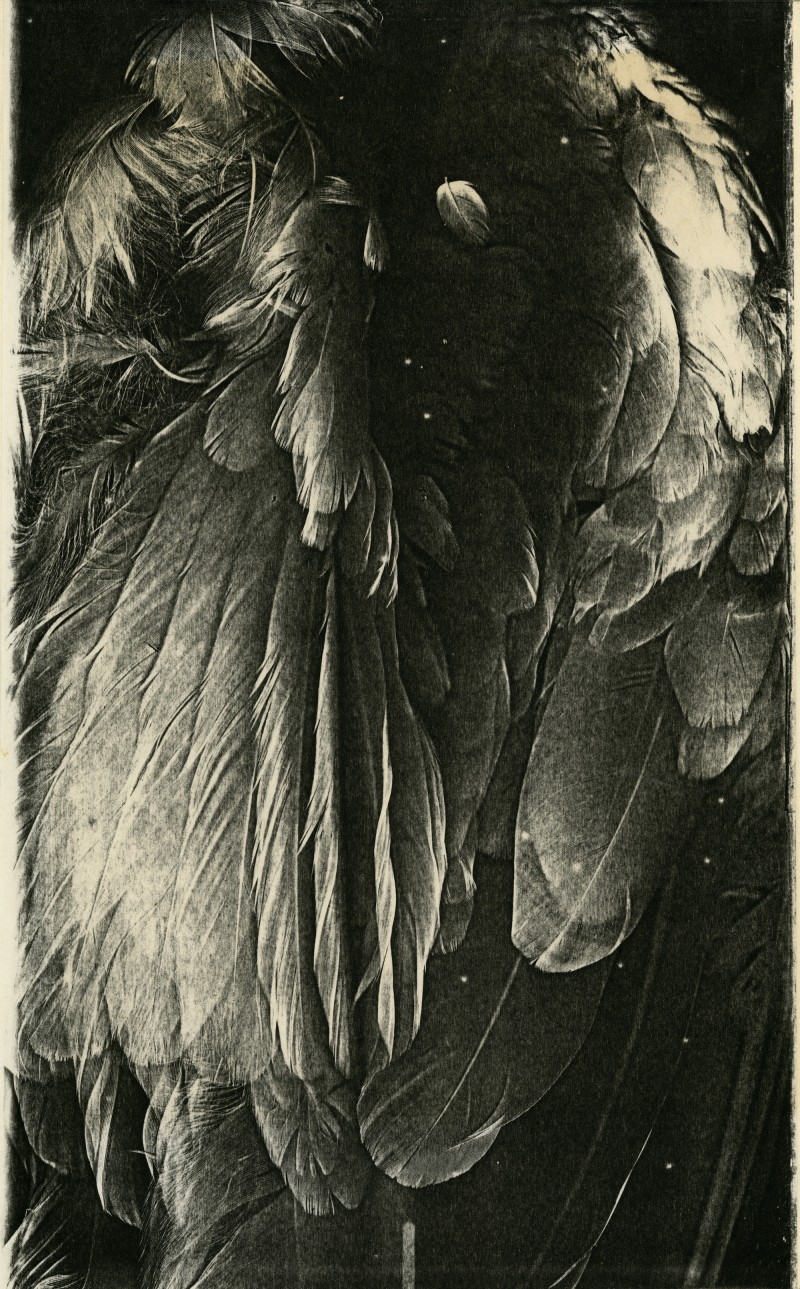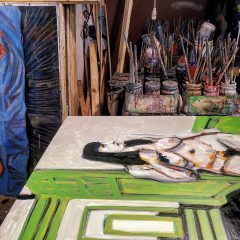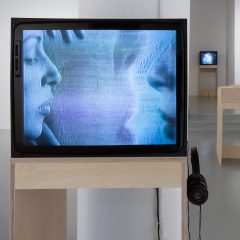Some artists are groomed for the job early by parents who encourage and nurture their budding talent. Others seize the moment when the right tool and an inspired idea come together, take hold, and then take over. Pati Hill was an adult, a published poet and novelist, a wife and mother when she found her tool and her inspiration – the photocopier. Hill (1921-2014), whose works from 1974-83 are on view at Arcadia University Art Gallery, was intrigued and then hooked for the rest of her life on the alchemical transformations by a photocopier of three-dimensional objects she served up to it like a researcher in a philosophy laboratory looking for an answer to metaphysical questions.

Hill’s machine of choice, an IBM Copier II, transformed the objects of her life (keys, hair curlers, a glove, a C-clamp) into moody and Victorian-esque prints, with inky blacks and x-ray-like whites and the shallow depth of field that ironically creates a background of cosmic vastness.
The images, which sprawl through three distinct exhibition spaces, contain an aggressive frontal directness that evokes taxonomies of specimens, but also, prisoners’ mug shots. For all their banality and otherworldliness, the images’ dark beauty is a little threatening for its evocation of death and a god-like distancing from it all.

What is not visible in Hill’s works, is the artist’s face, hands or body. But as you stroll through the show, the images seem to add up to a self-portrait, a depiction of things large and small to which Hill had a direct bodily connection.

Tucked in an alcove in the gallery is the piece that is meant to be the most haunting and poetic, a multi-part photocopy elegy to a dead swan Hill found on the beach near where she lived at the time. She carried the bird in her arms back to her house, which at the time housed the photocopier, and proceeded to copy it, little by little. She also wrote a terse story about the life, loves and death of a swan. And she called the piece “A Swan: An Opera in 9 Chapters.” I found the over-the-top melodrama of the work out of keeping with the deadpan prints of sweaters, scarf, sock, eyeglasses. But when life presents the artist with a dead swan, how could she not go with it.
Hill was prolific. In addition to her prints, which appear in three separate exhibit spaces, her many books are sprinkled around as well, in vitrines in the main gallery and in another space, where they are displayed on a tabletop and ready for you to thumb through.
Fascinated by language and communication she created a hieroglyphic system of directional symbols that are like precursors of today’s icons for street crossings and gendered bathrooms. And towards the end of her photocopier production she undertook the mythic task of photocopying Versailles. A couple images show you what she was after – bits and pieces of paving stones. It’s hard to say what else she was planning to do with the French palace but the paving stone prints seem more forlorn for being disconnected from the artist’s life and body in a way the other works are not.
It’s always delightful to be introduced to a character, and Pati Hill was one. Great show, go take a look before it leaves.
Pati Hill Photocopier, A Survey of Prints and Books (1974-83), to April 24. The Galleries at Arcadia, Spruance Art Center, 450 S. Easton Rd., Glenside PA 19038









